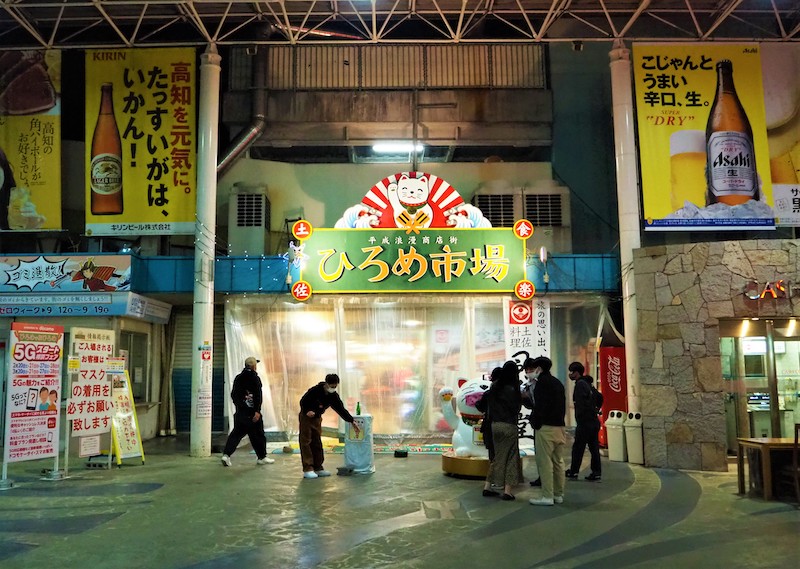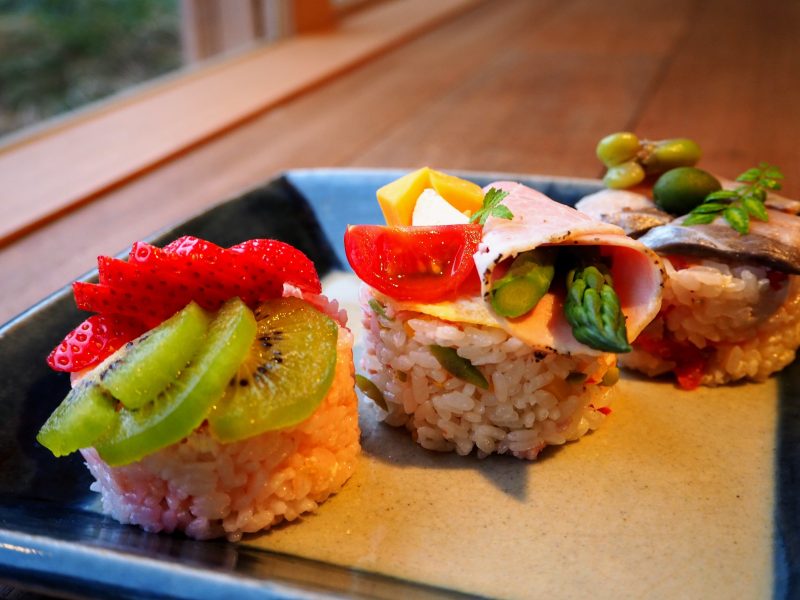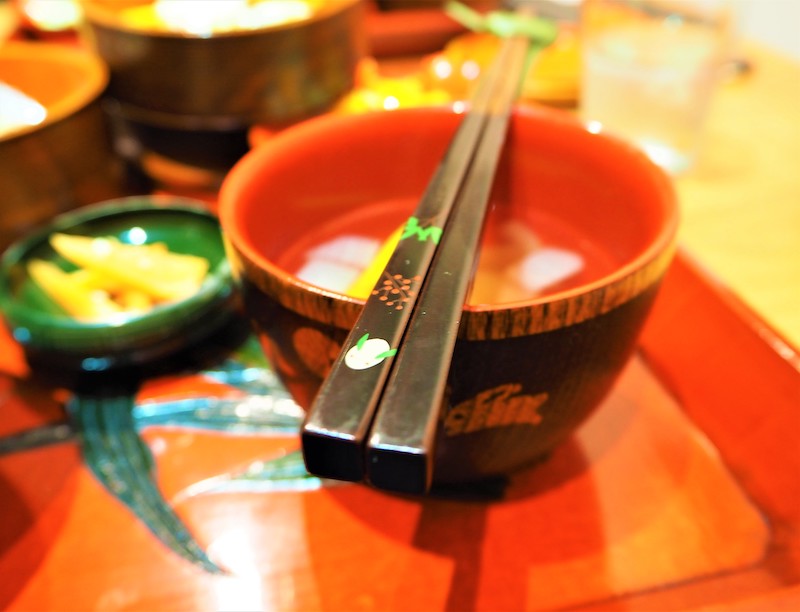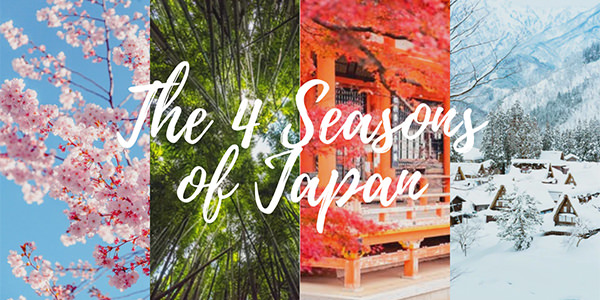Shikoku may be the smallest of Japan’s main islands, but don’t let its size fool you. This region is home to some of the most incredible attractions, richest culture, and most fascinating history you’ll find in all of Japan. With plenty of adventure, incredible food and beautiful nature, it’s a very family-friendly destination. Arriving in Tokyo and want to see a new side of Japan? Hop on a Jetstar flight, head to Shikoku, and check out the following destinations.
Castles, traditional towns and Studio Ghibli in Ehime
Start at Matsuyama Castle, the icon of Ehime and home to some incredible cherry blossom views in spring. The castle was constructed between 1602 and 1628, and today is one of Japan’s 12 remaining ‘original castles’, meaning it’s one of the nation’s few castles still standing proud since the feudal era. Hop on a chairlift to get to the top of the castle and enjoy the sweeping city views.
From the top of Matsuyama Castle, you just might be able to see one of the city’s other icons, Dogo Onsen. At 3,000 years old, Dogo is Japan’s oldest onsen, and it’s been immortalised in the Ghibli classic movie (as it was one of the film’s key inspirations). Soak up the history and soak your weary legs in the healing water of Ehime.
Garyu Sanso is a stunning villa and one that didn’t come easy. Built in 1907, this beautiful piece of architecture took four years and the work of numerous artisans to build. Standing tall on stilts, looking out onto the Hijikawa River, the house is the epitome of tranquillity with its tatami mat floors and a wonderful view of its meticulously maintained garden.
For a little day trip adventure, head on over to Uchiko, a perfect slice of old Japan. Similar to Takayama, Kanazawa, and even some of Kyoto’s old streets, this meticulously maintained town is a living, breathing museum, a showcase of the area’s history and culture. One of the highlights of Uchiko is Uchiko-za Theater, a still-functioning Kabuki and performing art theatre.
Discover More about Ehime
EXPLORING EHIME-THE CITRUS CAPITAL OF JAPAN
Bright blue water, washi paper and food markets in Kochi
Yusuhara is one of the more unique towns located in Shikoku, thanks in large part to one man, the same man behind the new Olympic Stadium, Kengo Kuma. A world-renowned architect, Kuma found great inspiration in the lush surroundings of Yusuhara, and he was so inspired he built the town a collection of stunning wooden landmarks. Yusuhara Machino-eki, a local market, hotel, and souvenir store, and Kumo no Ueno Toshokan (Yusuhara Community Library), are two key highlights. If you want to explore further, the Kuma-designed hotel Kumo no Ueno Hotel, which features a small museum on the works, is worth booking a room at.
With its crystal clarity and almost electric blue vibrance, Nakatsu Gorge is a spectacular destination for the photographer in your family and a great spot for a morning mini-hike. The gorge features bridges and pathways weaving through the clear and colourful rock pools. Try and find the top of the gorge for sweeping mountain views. After head to the Ino-cho Paper Museum to learn just how the area’s beautiful water is responsible for ‘Tosa Washi,’ a beautifully textured type of washi developed one thousand years ago. Sign up for an experience and make your own piece of local history.
For dinner like a local, Hirome Market, Kochi’s vibrant indoor food market and izakaya is the place to go. The market features 65 stalls, all selling their own take on the delicious local cuisine. Try the seared bonito (katsuo no tataki), a local speciality.
Discover More about Kochi
The Turquoise Waters and Cuisine Culture of Kochi
Soaring valleys, vine bridges, and show off structures in Tokushima
Get around Tokushima in style by joining a Brompton Bicycle Pottering Tour (pottering as in pottering around) tour. The tours offer a few routes throughout Tokushima, from the depths of lush Iya Valley to the dizzying heights of Mt. Bizan. There’s a route – and of course, bike – for riders of all interests and abilities. One of the highlights is a tour through the once merchant run town of Wakimachi.
Although it looks like a film set, Wakimachi is very much a real place. The township flourished in the Edo-era (1603-1867) when indigo merchants turned them down in a piece of art, with its stunning, lavishly designed buildings. During this time, indigo merchants conducted profitable business selling Tokshima’s iconic indigo-dyed fabrics.
Merchants from the area were incredibly rich, so rich in fact they’d build flashy firewalls for their homes. Known as ‘udatsu,’ these firewalls were erected between two-story buildings, made from clay-rich earth; they were designed to prevent fires from crawling roof to roof. While those firewalls were too expensive for most owners to construct, many in the town did so as a way to show off their wealth in style.
Head on over to Oboke Gorge for a fresh perspective on the area and cruise through the stunning landscape, and admire Tokushima’s natural beauty. It’s said that Tokushima was created when some 200 million years ago, water from the Yoshino river tore its way across Shikoku’s mountains, carving these incredible views along the way.
For a final view of the prefecture, visit one of Tokushima famous and hair raising Iya no Kazurabashi, located in Iya Valley. While the origins of these bridges are unclear, some say they were made by Kobo Daishi, founder of the Shingon Sect of Japanese Buddhism, while others believe Heike refugees crafted them while in hiding following the Gempei War (1180-1185), they’re definitely well worth exploring.
Discover More about Tokushima
Rugged valleys, merchant villages and spooky vine bridges in Tokushima
Noodle taxis, soy sauce and beautiful gardens in Kagawa
Kagawa is a place of great culture. Explore Ritsurin Garden, a stunning Japanese style strolling garden with a history that goes back to 1625.
To call Ritsurin Garden an icon of Kagawa would almost be an understatement. This spectacular landscape garden was built during the Edo Period by the area’s feudal lords, and it is today considered one of the best gardens in Japan.
There’s a strong argument behind the fact that many believe that it should be listed alongside Kanazawa’s Kenrokuen, Mito’s Kairakuen, and Okayama’s Korakuen, as a new addition to the “three most beautiful gardens of Japan.” The park’s layout features gently sloping hills, ponds, historic trees, and a few scattered pavilions from which you can enjoy the view.
Inside the park are a collection of equally interesting attractions, including a folk museum, a few rest houses, and the highlight, the Kikugetsu-tei teahouse. Located in the southwest part of the gardens, Kikugetsu-tei teahouse is a wonderful place to order a cup of matcha tea and relax on the verandahs overlooking the ponds.
One thing you won’t miss when exploring Kagawa is that it’s the unofficial udon capital of Japan. Home to about 600 udon restaurants, the choice can be a little overwhelming. Luckily there’s the Udon Taxi service to get you where you need to be. Hop in a cab and let the local experts take you where you need to go. Kawagawa’s Udon Taxi drivers are experts in all things udon. They’re had to pass three strict tests to secure their ‘Udon Taxi driver’ title, including a written test, field test and noodle-making test, so you know they know their noodles.
Kagawa’s most famous culinary export may be udon noodles, but if you have the opportunity, don’t miss the chance to explore the wonderful world of Oshinuki sushi. The Setonaikaishoku Lab. runs classes teaching the art of Oshinuki sushi, a local delicacy of rice pressed into a cake-like shape and topped with various ingredients, including vinegared Spanish mackerel soramame beans, and tamago-yaki fried egg. Colourful, delicious, and fun for all ages, it’s a failsafe cooking class and a great way to stretch your food presentation muscles.
For a deeper dive into the area’s lacquerware world, put aside a little time to visit the Art Museum of Sanuki Urushi Lacquer Ware. The museum, located in a laidback residential area of Takamatsu City, runs workshops for guests wanting to get a little more hands-on and learn about the lacquer process. Classes cover lacquering chopsticks, chopstick stands, small bowls, and lacquerware carving. Once your new lacquerware masterpiece is done, it’s left to dry for about a week, and after it can be shipped to the designated location in Japan, international shipping is also possible for an additional charge!
A little off the coast of the mainland of Kagawa is Shodo Island (Shodoshima), Kagawa’s olive island and home to some of the best soy sauce ever brewed. Yamaroku is one of the most iconic breweries in the area, and it featured in the ‘Salt’ episode of the hit 2018 Netflix series “Salt, Fat, Acid, Heat,” thanks to its wonderfully traditional ‘kioke’ wooden barrels brewing style, which creates the most dynamic and delicious soy sauce. It’s so well balanced and full-bodied and tastes great on rich vanilla ice cream.
Discover More about Kagawa
Food, Art, and Island Hopping in Kagawa
For more information on each prefecture, see:
EHIME
https://www.visitehimejapan.com/en/
KOCHI
https://visitkochijapan.com/en
TOKUSHIMA
https://discovertokushima.net/en/
KAGAWA
Countermeasures against new coronavirus infections have been taken at each destination, and disinfectant solutions for hand disinfection are installed, temperature is measured, staff masks are worn, and social distance between customers is secured. We recommend Shioku as a destination where you can travel with peace of mind.
























